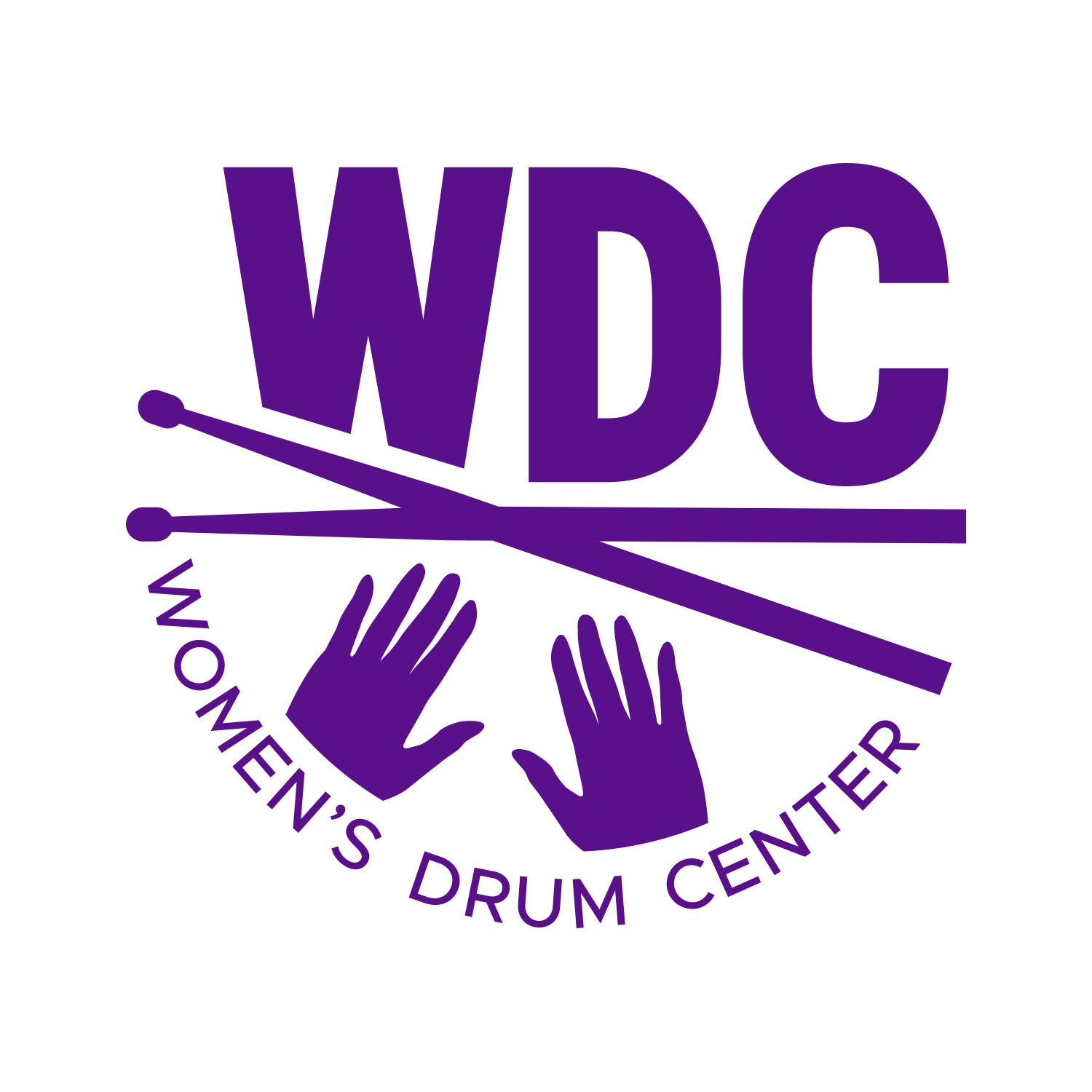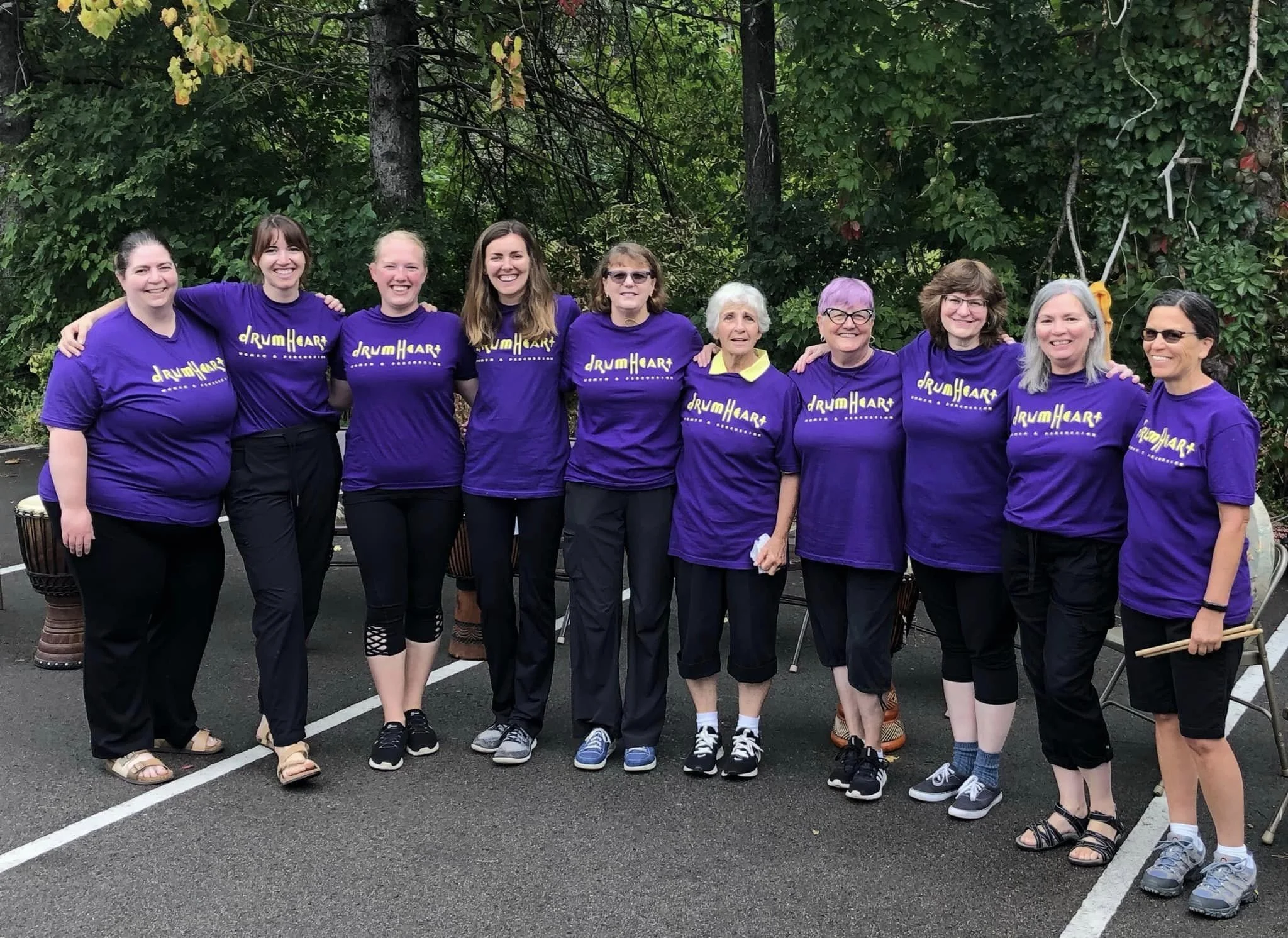

Stick Drum Repertoire
-
Neguinho do Samba (1954-2009) was a Brazilian percussionist and musician. Samba was the founder of Olodum, an internationally known cultural group based in Salvador, Brazil. Samba was considered to be the “father” of samba reggae in Bahia. Our rendition was taught to drumHeart by director Colleen Haas in 2006, and later arranged by director Kari Kjome. The name “Suinge” is used in many capacities in Bahia. But in this case, the word represents a particular combination of rhythms derived from the larger umbrella genre of samba reggae. Samba is a lively, rhythmical dance of Afro- Brazilian origin, and the popular music based on those rhythms called “Samba Axe”.
-
Dolly Dawn was written by Irving Burgie; drumHeart uses an arrangement by Colleen Hass, founder of drumHeart. This piece features Calypose/Caribbean rhythms and was inspired by an album version of the song sung by Harry Belafonte, and other Caribbean ostinato patterns. drumHeart has been performing this number for almost 30 years. In a particularly memorable performance of this piece, then drumHeart directory Krissy Bergmark accompanied drunmHeart on Dolly Dawn with steel drums; a perfect match for the feel of the song.
-
This piece is composed by Ile Aly, influenced by Candomble and Sambas of Brazil. It was taught to drumHeart by director Colleen Haas in 2006 and later arranged by director Kari Kjome. Samba Afro began as new carnival music created in the early 1970’s by an important group in Salvador, Bahia, called Ile Aly. Formed by a group of Afro-Brazilian youth, Ile Aly’s music grew from an impoverished neighborhood in protest to the discrimination faced by blacks who wanted to join popular carnival bands, and led the way for other cloca afro (African blocks), such as Olodum, who followed. Samba Afro is played slower than Rio’s samba, but there is still a high degree rhythmic intensity. Ile Aly’s music places more emphasis on multiple rhythms that cross each other in various drum sections. Though more narrow in pitch, the result is a thick and weighty texture full of impact and agitation.
-
This exuberant drumHeart piece was arranged by Colleen Hass, founder of the Women’s Drum Center and drumHeart. It features a combination of rhythms from many sources of pop music inspired by Jamaican musical forms. It was created to provide a sense of connection and to encourage interaction and dancing at community events. Jamaican Joy debuted in 1992 for the Minneapolis Women Take Back The Night March. drumHeart’s rendition surged through the crowd, creating an exhilarating flow of women dancing down the street; an unforgettable event where women truly were “taking back the night”. The three-section song later underwent many incarnations and continues to serve as one of drumHeart’s core, crowd-pleasing pieces to this day.
-
Mozambique is a favorite song in drumHeart’s repertoire. It was taught to them by guest teacher Jill James. Arranged by Maria Martinz and Ed Roscetti, Mozambique is a fusion of Afro-Cuban styles commonly associated with the Cuban Carnival.
Hand Drum Repertoire
-
The Macrou is a rhythm traditionally from the Susu ethnic group. The Susu are located in the western coastal region of Guinea which is where the rhythm comes from. The Macrou is a rhythm and dance that is usually played at the time of a full moon. Young people from different villages gather and participate in the social event. Often referred to as a “dance of section”, the Macrou is more of a social gathering where people get to know each other. The ceremony typically begins with the Yankadi, which has a slow swing feel. Dancers move in slow sweeping movements while singers face each other. The call of a whistle indicates the change to the Macrou: it changes to a fun, up- tempo pattern. The dance moves are high energy with interactive group dancing that allows people to make new friends. Macrou is a favorite piece in the drumHeart repertoire. It is often played at the end of a performance, because the build-up from the slow start to fast, exhilarating finish makes it a hard song to follow! It is always a crowd-pleaser.
-
In the Malinke (Guinea) language, the word Kassa means not only the grain attic but also the grower; it is also the name of a rhythm that accompanies the harvest. At harvest time, the peasants set off to work in the fields, which are often far removed from the village. They set up a camp where they will stay for as much time as necessary. Women go with them to prepare their meals. The drummers follow the workers from field to field, playing Kassa as they go. The drums can be heard the whole day long; from time to time, people dance before the. Once the work is finished, the workers return to the village for a great feast called Kassala Don. Kassa is a favorite piece in the drumHeart and Djembe Diyamu repertoires; the way in which the various sections interweave is especially melodic and interesting.
-
Bobobo (originally “Akpese”) is said to have been developed by Francis Kojo Nuatro. The dance has its roots from Wusuta and in the Highlife music popular across West African countries. Bobobo gained national recognition in the 1950s and 1960s because of its use at political rallies and the novelty of its dance formations and movements. It is generally performed at funerals and other social occasions. This is a social dance song with a great deal of room for free expression. In general, the men sing and dance in the center while the women dance in a ring around them. There are “slow” and “fast” versions of Bobobo. The slow one is called Akpese and the fast one is termed to be Bobobo.
-
Fanga Alafia offers a blessing of good health, good spirits, and peace of mind. It honors the force of creation in the universe with the thought “so shall it be”. Fanga was used by traveling tribes upon entering new villages; a visiting tribe approaching a village would sing Fanga-Alafiya to indicate that they come in peace. If the villagers welcomed them, they would reply: Ashe-Ashe. Then, the travelers and villagers reverse the lines. This song could create a bridge between tribes that otherwise spoke different languages. Music is a true universal language! Fanga Alafia is a traditional Liberian welcome song performed by drumHeart. The piece was arranged collaboratively by the ensemble and is often used to open public performances.
-
Fire in the Mountain is a piece that was arranged by Ubaka Hill and gifted to drumHeart. The Women’s Drum Center brought Hill to the Twin Cities on several occasions. Hill is a nationally known percussionist, poet, singer/songwriter, inspirational speaker, visual artist, teaching artist, and facilitator of sacred ceremonies. In September 2006, she came to facilitate a workshop and concert on the spirit of drumming. Fire in the Mountain was created to express Hill’s amazement of the eternal fires and her love of iron.
-
Transcribed by Kari Kjome, drumHeart director from 2001 to 2009, this song includes an exciting dance that is an homage to women. Zaouli is a popular music and dance practiced by the Guro communities of the Bouaflé and Zuénoula departments of Côte d’Ivoire. Zaouli is inspired by two masks: the Blou and the Djela. Its other name, Djela lou Zaouli means Zaouli, the daughter of Djela. In a single event, the practice brings together sculpture (the mask), weaving (the costume), music (the band and song), and dance. There are seven types of Zaouli masks, each translating a specific legend. The bearers and practitioners include sculptors, craftspeople, instrumentalists, singers, dancers, and the notables (the guarantors of the community’s customs and traditions). Zaouli plays an educational, playful, and aesthetic role. The traditional chiefdom, the guarantor of traditions, plays a key role in the transmission process and inter-village dance competitions; and the festivals offer further opportunities for revitalization.

About drumHeart
drumHeart is WDC’s premiere ensemble led by Ray. They are equally at home at Orchestra Hall as at the Minnesota State Fair. For over 30 years, drumHeart has delivered powerful drum music for community fundraisers, walks, and runs. Their repertoire includes original songs composed for the group, traditional West African music, and songs that feature African xylophone and Adenkum (African gourds traditionally played by women). The group also creates a carnival sound with Caribbean and Latin-influenced music. Through this variety, drumHeart delivers unique performances that leave audiences energized by world music.



